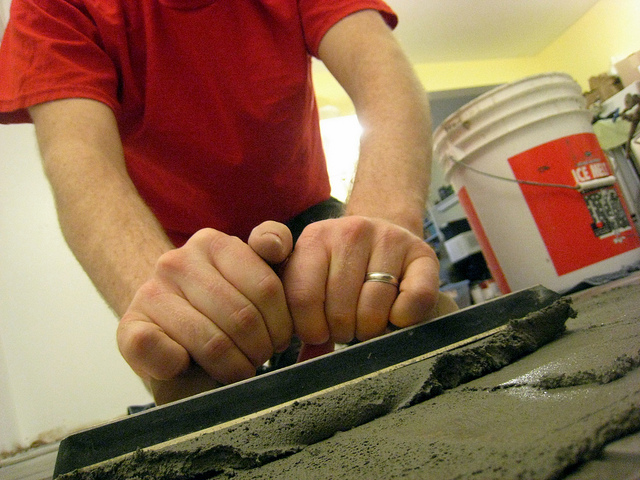
When it comes to tile installation, you’ll have the same general list of tools for most projects. This list includes a mixer, tile cutters, trowels, and grout floats. While the list of tile installation tools may be rather basic, determining the specificities of each tile installation tool for your particular tiling job can be a little more difficult.
In order to make the selection process easier and less time consuming, we’ve put together a list of considerations to take into account when choosing the tools for your tiling job.
When installing tile, you’ll use a mixer to mix your thinset or grout. Mixers can range from large industrial sizes to ones that you can fix to your electric drill. For most jobs you’ll most likely use an attachment – so be sure you have a drill.
It’s important to keep in mind that mixing faster isn’t always better. Your mixing speed shouldn’t exceed 300 RPM. If you’re doing a small job, you can always mix your grout by hand, just be sure it reaches the correct consistency. Always take care to clean your mixer immediately after mixing with water and a scrub brush to make your tool last longer.
The type of tile cutters you’ll use will vary with each job. For small and medium sized jobs that use rectangular tiles, nippers or tile scorers will do just fine. If you’re doing a larger job or working with natural stone, you’ll need to use a wet saw. Wet saws will not only allow you to cut tile more quickly, but cut tile into 90-degree angles to fit around fixtures.
When selecting your trowel, you should be aiming for optimum mortar coverage. There are several factors that influence this, and those include the size of the tile, the thickness of the tile, the size of the grooves on the back of the tile, the type of mortar you’re using, as well as the surface you’re laying the tile over.
Generally, the bigger the tile the bigger the notch, so for smaller tiles, ¼ inch by ¼ inch works nicely. For tiles between 8 and 16 inches, ¼ inch by 3/8 inch works best. For tiles larger than 16 inches, a ½ inch by ½ inch trowel does the job.
Grout floats will be interacting not only with the grout, but with the tile, so both need to be taken into consideration. Standard grout floats work best with cementitious grout and most types of tile. But, if you’re using natural stone you should use a stone float, which is made of softer rubber so it won’t scratch your tile and will minimize grout residue on textured surfaces. If you’re working in a difficult to navigate area, choose an offset grout float for easier maneuverability.
Selecting the proper tools for your tile installation will not only make your job easier, but more efficient and of a higher quality. If you’re looking for tile installation products, Tile Pro Depot has got you covered. We carry a wide array of tile installation tools and tile setting materials, so no matter the job, we’ll have what you need.
Visit our website to place an order and to view our selection of products. If you have any questions, feel free to contact us online or by phone at (844) 751-2625.

Welcome to Tile Pro Depot! We established this site to service the specific needs of the tile installation professional. Tile installation tools, tile setting materials, premixed grout and more tile installation products online at Tile Pro Depot.